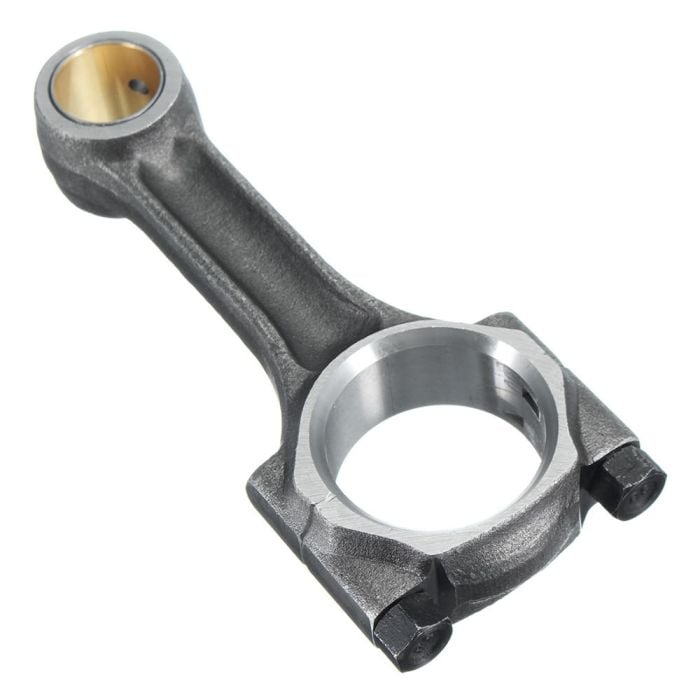Lower downtime by using a well-maintained clp engine.
Lower downtime by using a well-maintained clp engine.
Blog Article
How a Clp Engine Can Boost Performance in Various Industries
The advent of CLP engines notes a considerable change in functional efficiency throughout different markets, driven by their ability to maximize fuel consumption and reduce downtime. Industries such as manufacturing and logistics stand to get significantly from their robust layout and regular power result, which promise to enhance operations and boost productivity. As companies progressively prioritize sustainability alongside performance, the function of CLP engines ends up being even more essential. What continues to be to be seen is exactly how these improvements will form the future landscape of commercial procedures and their influence on wider economic fads (clp engine).
Introduction of CLP Engines
CLP engines, or Constant Liquid Propellant engines, represent a considerable development in propulsion technology, specifically for room applications. These engines use a constant feed system that permits the sustained expulsion of propellant, leading to boosted performance and performance compared to standard strong or hybrid propulsion systems. By keeping a consistent circulation of fluid propellant, CLP engines can attain a lot more accurate drive control, which is vital for navigating spacecraft in various goal circumstances.
The design of CLP engines integrates innovative materials and ingenious fuel monitoring systems. clp engine. This results in decreased weight and boosted integrity, vital variables for long-duration area goals. Moreover, the continuous procedure decreases the threat of burning instability, a typical challenge in conventional rocket engines.

Advantages in Production
The manufacturing of Constant Liquid Propellant (CLP) engines provides a number of significant benefits that enhance both efficiency and cost-effectiveness. One of the primary benefits is the streamlined production procedure, which minimizes the complexity connected with standard propulsion systems. By using liquid propellant, manufacturers can achieve better accuracy in engine performance, leading to maximized power output and lowered waste.
In addition, CLP engines assist in a greater level of modularity, permitting much easier integration right into various production lines. This flexibility can substantially reduce lead times and boost total functional flexibility. Using CLP technology likewise often tends to minimize the requirement for considerable maintenance due to fewer relocating parts, which equates right into decreased downtime and functional expenses.

Applications in Logistics
Leveraging Continuous Fluid Propellant (CLP) engines in logistics offers significant benefits in functional efficiency and reliability. These engines supply a durable remedy for different transportation needs, allowing the smooth movement of products throughout substantial distances. The inherent layout of CLP engines enables constant power outcome, which converts into smoother and a lot more predictable transport routines.
One of the essential applications of CLP engines in logistics remains in heavy-duty products transportation, where they can drive both ground and aerial vehicles. Their capacity to maintain high performance under differing tons problems guarantees that delivery timelines are met, thus enhancing consumer contentment. Additionally, CLP engines can be integrated right into automated logistics systems, helping with real-time tracking and optimizing course planning.
Additionally, the durability of CLP engines reduces upkeep downtime, allowing logistics companies to optimize their operational capacities. This is specifically beneficial in warehousing procedures, where efficiency in handling and transferring items is vital. As logistics continues to advance, the combination of CLP engines stands for a forward-thinking strategy that not only enhances performance yet also sustains the sector's expanding needs for dependability and rate.
Effect on Power Efficiency
Just How do Constant Fluid Propellant (CLP) engines improve energy performance in transport? CLP engines use a constant circulation of liquid fuel, enhancing burning procedures click and keeping a secure drive output. This design decreases power losses connected with traditional combustion engines, where fuel delivery can differ and lead to go to website inadequacies.
The continual procedure of CLP engines permits for a more efficient thermal cycle, resulting in higher particular impulse compared to conventional engines. clp engine. This equates to reduced gas usage for the very same quantity of job done, significantly decreasing functional costs throughout numerous transportation industries, consisting of air travel and maritime industries
In addition, the capability of CLP engines to keep ideal performance under varying load conditions minimizes the need for regular acceleration and slowdown, further boosting fuel performance. Boosted energy efficiency not only contributes to cost savings however likewise brings about reduce greenhouse gas discharges, straightening with global sustainability objectives.
Future Trends and Innovations
Arising improvements in Continuous Liquid Propellant (CLP) engine technology promise to transform the landscape of transport efficiency and sustainability. As markets pivot towards greener alternatives, CLP engines stand at the leading edge, incorporating innovative materials and design methodologies that enhance efficiency while lessening environmental effect.
One of one of the most encouraging trends is the fostering of crossbreed systems that combine CLP engines with sustainable energy sources. This harmony can enhance fuel usage and minimize emissions, aligning with worldwide sustainability goals. Innovations in computational fluid dynamics (CFD) are facilitating the layout of more aerodynamically reliable engines, leading to reduced drag and enhanced fuel performance.
Additionally, the growth of wise monitoring systems is established to enhance functional efficiencies. These systems take advantage of data analytics and IoT innovation to maximize engine performance in real-time, making certain that the engines operate within their most efficient criteria.
As study continues to explore alternate propellant formulas-- such as biofuels and synthetic gas-- the future of CLP engines looks encouraging. By using these developments, industries can not only boost their performance but likewise add significantly to a cleaner, much more sustainable more information future in transportation.
Verdict
In verdict, CLP engines stand for a substantial development in effectiveness across multiple sectors. The integration of sophisticated materials and less moving components reduces maintenance requirements, while alignment with sustainability goals settings CLP engines as a critical innovation for the future.
Report this page